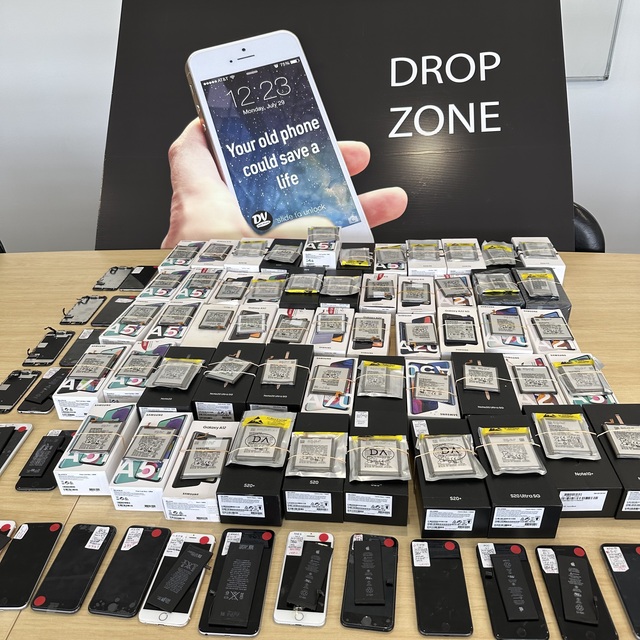
In Australia, an estimated one in four women and one in 14 men have experienced physical and/or sexual violence from an intimate partner since the age of 15.
Technology-facilitated abuse is a broad term encompassing any form of abuse or hard that use mobile and digital technologies and can include a wide range of behaviours such as monitoring and stalking the whereabouts and movements of the victim in real time, monitoring the victim’s internet use or repeatedly sending abusive or threatening messages to the victim.
Devastatingly, new data from domestic violence support charity shows demand for help is showing no signs of slowing down, with a 29 per cent increase in people helped by their services since this time last year.
In this digitally dependent society, sadly technology is often used to control and manipulate victims of domestic violence, with mobile phones commonly misused by perpetrators for tracking via spyware or location services.
In fact, shockingly, over half (57 per cent) of Domestic Violence victims report their phones and text messages are checked without their consent ‘all the time’.
Almost every Australian relies on a smartphone in everyday life, from phone calls and text messages to health tracking and digital payments.
Being without access to a safe, private smartphone makes it increasingly challenging for victims of domestic violence to break the cycle of abuse.
In fact, over two in three (70 per cent) women who experienced abuse had never separated from a violent partner, often due to financial dependency and a lack of independence because of coercive control.
Highlighting an urgent need for the provision of a safe communication lifeline DV Safe Phone is encouraging Australians to speak to decision makers at their workplaces to donate unused technology to the charity, providing a safe device to DV victims, especially throughout the 16 Days of Activism against Gender based Violence (Monday 25 November to Tuesday 10 December)
Devastatingly, new data from domestic violence support charity shows demand for help is showing no signs of slowing down, with a 29 per cent increase in people helped by their services since this time last year.
For CEO and director of DV Safe Phone Ashton Wood, DV Safe Phone was born during the Covid pandemic when Ashton was clearing out old items from his house and intended to donate them to those who need it most.
With lockdown happening, he had nowhere to take it, so rang an old friend, a senior police sergeant asking if he could take it anywhere but all she needed in that moment was mobile phones for victims of domestic and family violence.
Ashton works closely with domestic violence and law enforcement agencies to better understand the challenges that are faced by victims in fleeing domestic violence and perpetrator tech-abuse that often happens during and after these times.
He has also provided insights and feedback to the current Domestic and Family Violence Guideline which is undergoing a review with the intention of ensuring victims are better-supported through telecommunications solutions.
Ashton said the provision of a safe smartphone was not simply a means of communication but an essential lifeline to help DV victims break the cycle and exit an abusive relationship safely.
“With over 22.3 million redundant mobile phones gathering dust in drawers and cupboards, ending up in landfill, DV Safe Phone is on a mission to give them, and DV victims, a new life by supplying them to domestic violence agencies across Australia,” he said.
“Since we began, we have repaired, repurposed and gifted over 10,000 mobile phones to domestic violence victims through our agency partners (DV agencies, police stations, hospitals and safe houses) across the country.”
As a domestic violence survivor and now author, Lauren Trevan recalls, “I eventually realised that my abuser was monitoring my emails, text messages and social media accounts.
“He once told me he had put cameras in the house so he would know if I had anyone there.
“I was certain he was tracking me, he knew where I was all the time.
“Receiving a DV Safe Phone would have made an enormous difference to me in both the lead up to exiting the relationship and the aftermath.
Cutting off his controlling tools was vital, and a protected phone would have helped me regain some agency and move forward safely.”
“While DV Safe Phone has already provided support to over 10,000 people, we’re actively seeking the support of businesses to partner with, who can supply unused technology to increase our capabilities.
“For every phone we distribute, a victim gains a crucial tool to reach out for help, connect with loved ones, and take steps towards rebuilding their life,” Ashton adds.
“Participation from businesses helps to open conversations in the workplace and helps break down the barriers that often prevent survivors from seeking help, showing them that they are not alone.
“It also allows for a broader conversation on how workplaces can offer support and resources to those in need.
“One way to support domestic and family violence victims is to encourage your workplace to actually talk about it.
“Organisations by law now need to have a domestic violence policy and provide leave to staff experiencing domestic violence.
“DV Safe Phone, is encouraging individuals to speak to decision makers at their workplace to champion safety and awareness for domestic violence victims and taking the opportunity to fulfil ESG commitments, while creating a safe place for understanding and support for domestic violence in the workplace.”
To find out more about how individuals and workplaces can get involved, head to the website: dvsafephone.org/







